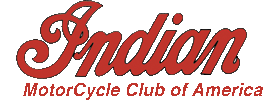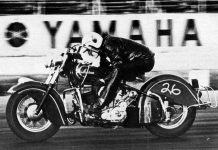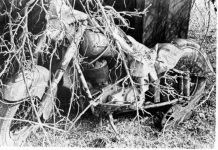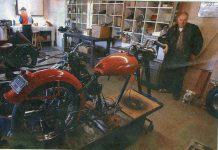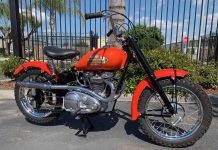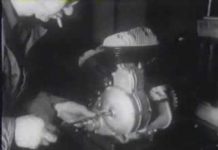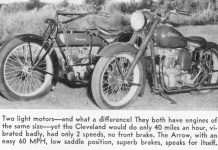Indians Forever – A Visit with Bob Stark
Here's "Bullet Bob" Stark urging the test Indian "80" past the Chrondeks at a terminal velocity of 81.08mph, 1609 ET.
While the figures might not be impressive alongside times turned in by more modern "Superbikes," comparing the FFLH times (obtained at the same racetrack last November) with the Chief's tends to bear out the "Indians Forever" view.
Restoration of the Relics
History of Starklite Cycle
Bob Stark looks up from his sweeping chores and smiles his recognition. "Hi, "...
Restoring Vintage Indians for Decades
Bob Stark loves vintage Indian motorcycles.
He loves them so much, he will...
A Trip down Memory Lane – Purchasing Antique Motorcycles
A Trip down Memory Lane - Purchasing Antique Motorcycles
by Gary Stark
The 1953 Indian Motorcycle Advertisement
https://youtu.be/E22XKvzjX9M
This is a great video to watch how quickly they were able to build an engine...
The Inside Story of the Indian Arrow
By T.A. Hodgdon
SOME FOLKS collect stamps, some go for photography in a big
way, others spend all their spare...
For Sale: A 1919 Indian Power Plus Board Tracker
Few of us can afford it but that doesn't mean we can't look at the pictures! ...
Hap Alzina – Indians Man of the West
It was 1949 and Indian Motorcycle was struggling. It was so bad that the company could not fulfill the orders it had...
